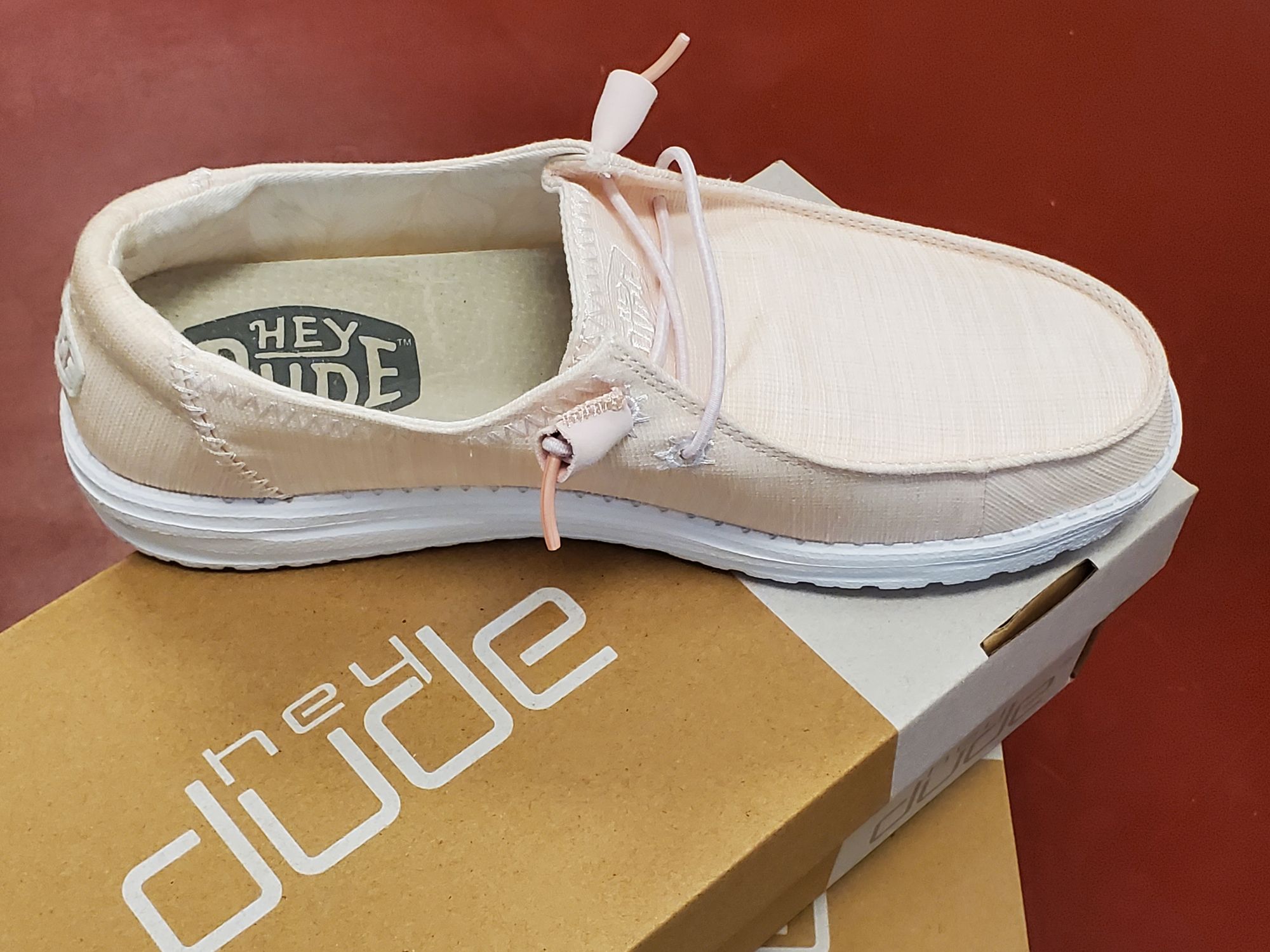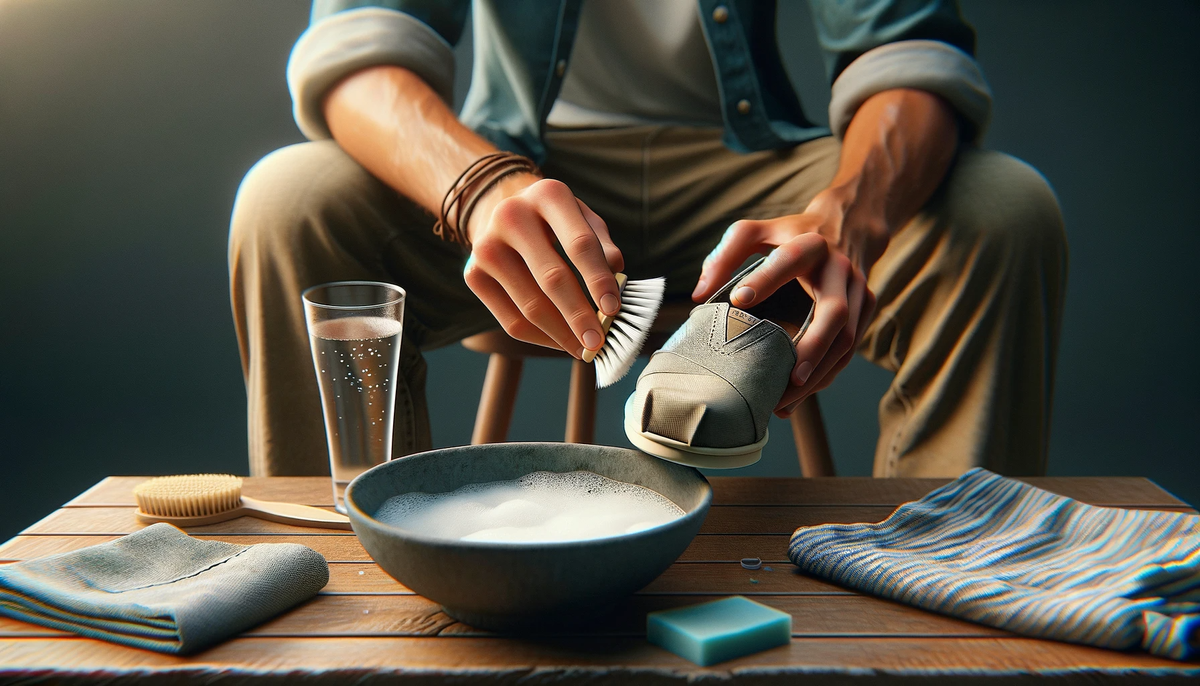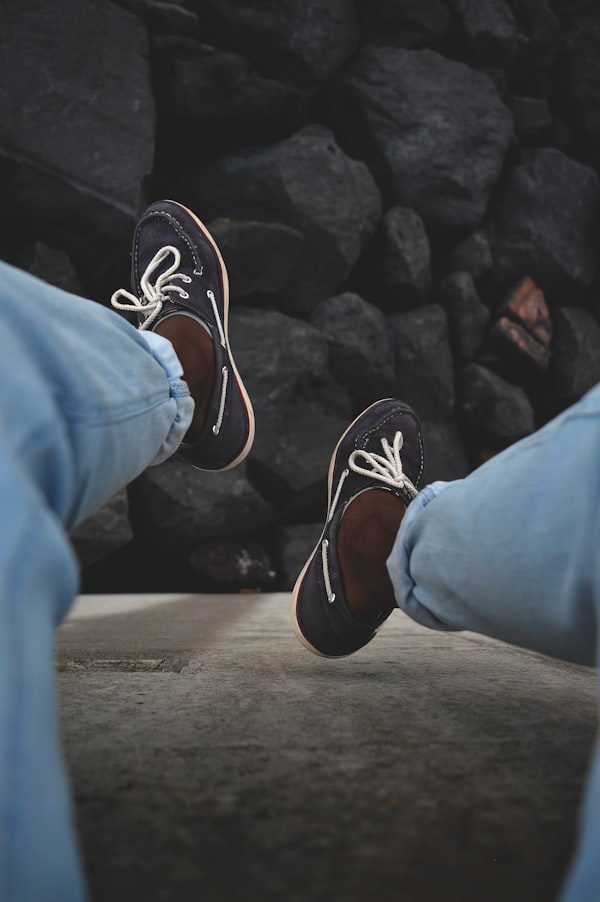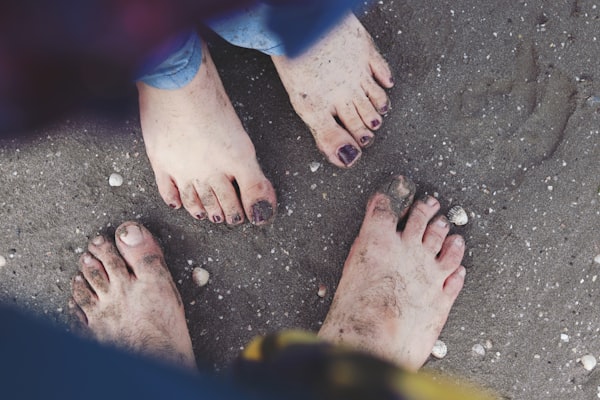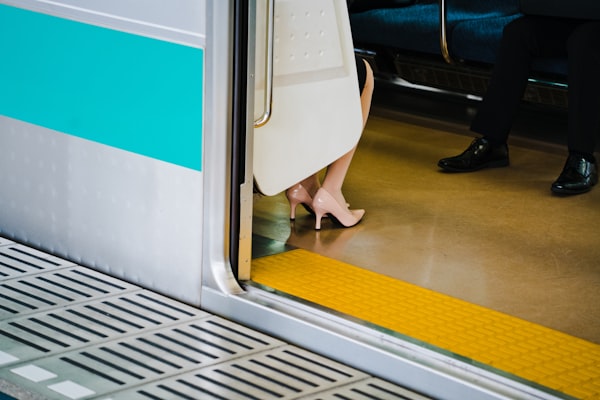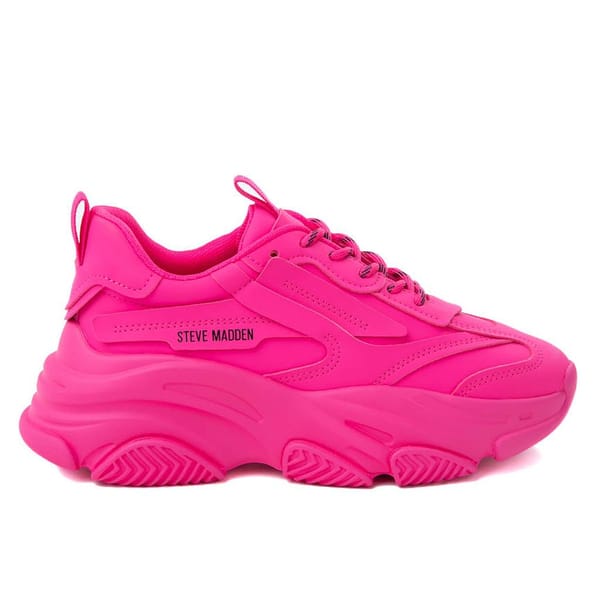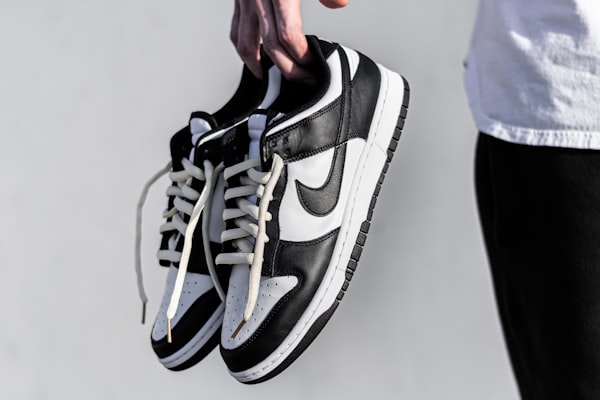Did you score some old-school Nike high-tops at your local thrift shop but now realize they were part of the “buy one, get a free layer of dirt” sale?
Don't let a little dirt prevent you from stepping back in time with those stylish vintage shoes. With just a few simple steps, you can easily clean up your thrifted finds and make them wearable again.
Imagine the satisfaction of rescuing a neglected pair of shoes and giving them a new lease on life. Plus, who doesn't love wearing a freshly cleaned pair of shoes?
We've got you covered if you’re looking for an easy way to give your thrifted shoes a fresh start. You'll bring your shoes back to their former 1980s glory and be well on your way to mastering the moonwalk in no time.
What’s the Solution?
The problem with most thrifted shoes is that you don’t know where they’ve been, but several dirty “clues” are left behind.
You can't bring yourself to wear them, and you're starting to think you made a mistake by buying them. You're worried that all your thrifting efforts were in vain.
Don't despair! With some elbow grease and simple cleaning techniques outlined below, you can quickly restore your thrifted shoes to their former glory. So, grab your cleaning supplies, and let’s get down to business.
Step 1: Gather Your Supplies
*As an Amazon Associate, I earn a small commission from qualifying purchases at no cost to you.
Before you begin cleaning your thrifted shoes, make sure you have the following cleaning supplies on hand:
- Dry Brush: This will be used to brush away the first layer of dirt and debris from the outside of the shoes.
- Soft-Bristled Brush or Old Toothbrush: This will be used to gently scrub away dirt and debris during the wet cleaning/scrubbing step.
- Cleaning Solution: The type of cleaning solution you'll need depends on the material of your shoes. Here are some options to consider:
- Leather Shoes: Warm water, mild soap (such as dish soap or leather cleaner).
- Canvas or Fabric Shoes: Gentle detergent (such as dish soap or laundry detergent).
- Suede Shoes: Specialized suede cleaner and a soft-bristled brush.
- Rubber or Synthetic Shoes: Gentle soap (such as dish soap) and water mix or specialized shoe cleaner.
- Small Bucket or Container: This will be used to mix the cleaning solution and hold the lukewarm water for rinsing.
- Cleaning Cloth or Sponge: You'll need a clean cloth or sponge to apply the cleaning solution to your shoes.
- Clean Wet Towel: Prepare a clean wet towel for rinsing the shoes after scrubbing.
- Non-Porous Sheet: It's a good idea to protect the surface you're working on with a non-porous sheet to prevent any mess.
- Newspaper or Similar Material: You will need this to stuff the shoes for air drying.
- Shoe Protectants (Optional): If you want to give your shoes extra protection and shine after cleaning, consider having the following products available:
- Leather Shoes: Leather conditioner or wax-based leather polish.
- Canvas or Fabric Shoes: Fabric protector spray or water-repellent spray.
- Suede Shoes: Suede protector spray.
- Rubber or Synthetic Shoes: Shoe protector spray.

By gathering these supplies beforehand, you'll be well-prepared to clean and maintain your shoes effectively.
Step 2: Remove Those Dirty Laces
Sometimes the little things make all the difference, which is the case when cleaning your thrifted shoes. By removing the laces, you can thoroughly clean every inch of your shoes without any pesky strings getting in the way.
And while you're at it, why not give those laces a good wash too? It may seem like an extra step, but trust us, it's worth it for clean, fresh-smelling shoes.
Step 3: Grab a Dry Brush
First things first, give those shoes a good brush down. Use the dry brush to gently remove any dirt or debris stuck to the outside of the shoes. This will help loosen any tough stains and make the rest of the cleaning process much more manageable.
Step 4: Pick Your Cleaning Solution
When it comes to giving your thrifted shoes a good clean, your cleaning solution will depend on what they're made of. Here are a few options to consider:
- For Leather Shoes: It's essential to be gentle. A mixture of warm water and mild soap, such as dish soap or leather cleaner, should remove dirt and grime without damaging the leather. Just be sure to avoid using harsh chemicals or abrasive cleaners, as these can strip the leather of its natural oils and cause it to become dry and brittle over time. Instead, use a gentle cleaning solution to nourish and protect the leather while removing dirt or stains.
- For Canvas or Fabric Shoes: A gentle detergent is usually all you need. Dish soap or laundry detergent will remove dirt and stains while being gentle on the fabric. Just be sure to avoid using bleach or other harsh chemicals, as these can cause the color of your shoes to fade or bleed. Instead, opt for a mild cleaning solution that safely removes dirt and stains without damaging the material.
- For Suede Shoes: It's best to use a specialized suede cleaner and soft-bristled brush and follow the instructions on the bottle. Some cleaners may need to be sprayed onto the shoes, while others may require you to dip a cloth or brush into the solution and apply it that way.
- For Shoes Made of Rubber or Synthetics: You can use gentle soap (such as dish soap) and water mix as you would for leather shoes or a specialized shoe cleaner. Always use a specialized shoe cleaner according to the instructions on the bottle. Some cleaners may need to be sprayed onto the shoes, while others may require you to dip a cloth or brush into the solution and apply it that way. Be sure to follow the instructions carefully to ensure that you're using the cleaner correctly.
Regardless of which cleaning method you choose, be sure to spot-test any cleaning solution on a small, inconspicuous area before applying it to the entire shoe. This will help ensure that the solution won't cause any damage to the material.
Step 5: Let’s Get Scrubbing
Now that you've chosen the right cleaning solution for your used shoes, it's time to get scrubbing. Here are a few things to keep in mind:
- Use a clean cloth or sponge to apply the cleaning solution to your shoes, paying extra attention to any particularly dirty or scuffed areas.
- Scrub gently but firmly (with a soft-bristled brush or old toothbrush) to loosen up any surface dirt or grime that may be stuck to the surface of your shoes.
- With Suede shoes, first gently dry brush in the direction of the nap to remove surface debris without damaging the nap. Once the cleaner has been applied, use the brush to scrub the shoes in a circular motion gently. This will help to lift any stains and dirt that may be embedded in the suede.
- Rinse by wiping down the shoes with a clean wet towel (wring out as much water as possible). While wiping down, you’ll want to rinse and ring out the towel a few times. Soap left behind can attract funky smells.
You may need to repeat this step several times for significant stains or strong odors.
Step 6: Allow to Dry
After cleaning your thrifted shoes, allowing them to air dry completely before wearing them again is essential. This will help ensure that the cleaning solution has a chance to work its magic fully and that your shoes are completely dry before you put them on.
To speed up the drying process, you can stuff your shoes with newspaper or a clean cloth to help absorb any excess moisture. Just be sure to avoid using heat sources, such as a hairdryer, radiator, or direct sunlight, as these can cause some materials to become stiff and brittle.
Step 7: Time for A Shine
After your shoes are clean and dry, it's a good time to give them extra protection and shine. Here are a few options to consider:
- Leather Conditioner: For leather shoes, you can use a leather conditioner or a wax-based leather polish to nourish and protect the leather.
- Fabric Protectant: For canvas or fabric shoes, you can use a fabric protector spray or water-repellent spray to help to protect them from water damage and stains.
- Suede Protectant: You can use a suede protector spray to help repel water and stains for suede shoes.
- Shoe Protectant: For shoes made of other materials, such as rubber or synthetics, you can use a shoe protector spray to help protect against water damage and stains.
For all these products, follow the instructions on the bottle for the best results, dry completely before wearing shoes again, and test the solution on a small, inconspicuous area before applying it to the entire shoe. Also, sprays are better applied outside where you have proper ventilation and are less likely to damage surfaces.
Tips from Our Editors
- You may need a specialized stain remover if your shoes have particularly stubborn stains. Follow the instructions on the bottle, and test the solution on a small, inconspicuous area before applying it to the entire shoe.
- If your used shoes have a strong odor, add a small amount of white vinegar to your cleaning solution to help deodorize them. Just be sure to rinse/wipe the shoes thoroughly after cleaning to remove any residual vinegar smell, and air dry completely before wearing the shoes again.
- Important: You should not add vinegar if your cleaning solution contains bleach, hydrogen peroxide, baking soda, or castile soap.
On a Final Note
Thrift store finds can be a bit of a gamble, but with a little TLC, you can turn even the dingiest of shoes into a stylish and wearable pair. So go ahead, show off those vintage kicks, and give us your best moonwalk. You've earned it!
Related Articles









